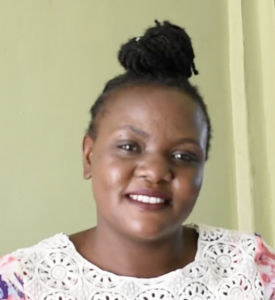The 490 people of Talamuti Community struggle to access sufficient water. The water they can collect from their local unprotected spring leaves them with water-related illnesses that cost them their time, health, and financial resources that they can not afford to lose.
"Most of the community members wake up very early in the morning, especially the women. They will first look for water before doing anything else," said field officer Adelaide Nasimiyu when describing the daily water crisis the community members face.

"They believe that the water fetched in the morning is pure for drinking, and there's no need to be treated," concluded Adelaide.
We know from the number of people dealing with waterborne illnesses in the community that the spring does not offer clean water any time of the day, even if its looks are deceiving. Sadly, without any other reliable water source, people must use what they collect regardless of the consequences.

"Fetching water from this water point, especially during the rainy season, is very difficult. Sometimes, when the rains are too heavy, the runoff water gets mixed with the spring water. This makes the water dirty. When you're in a hurry, you have to fetch the water just as it is or wait until it clears before drawing," said 43-year-old farmer Judith Misanya (shown above).
She continued, "The water is open to contamination. It is not treated before drinking, [so] we fall sick. I remember my son being admitted to the hospital because of typhoid. That's where I learned that treating water was more important than assuming that the water is safe for drinking."
Not only is the water collected from the spring risky to drink, but collecting it is not easy.
People must stand in ankle-deep water and submerge their collection containers under a makeshift, broken plastic pipe to collect water. It is a time-consuming task that leads to long lines and leaves everyone with little time for anything else.

"Fetching water from this water point is not easy. Sometimes, you are in a hurry, but you find the improvised discharge pipe missing. This forces you to either look for another alternative discharge pipe or go back home, get a jug, [and] then come to draw the water. This wastes alot of my time. I don't get enough time to study nor play," said 13-year-old Alfred (shown above).

The protection of the spring will enable Judith, Alfred, and other community members to access clean, sufficient water efficiently so they still have time for other important daily tasks. And hopefully, regular water access will empower them to imagine a brighter future.
The Proposed Solution, Determined Together...
At The Water Project, everyone has a part in conversations and solutions. We operate in transparency, believing it benefits everyone. We expect reliability from one another as well as our water solutions. Everyone involved makes this possible through hard work and dedication.
In a joint discovery process, community members determine their most advantageous water solution alongside our technical experts. Read more specifics about this solution on the What We're Building tab of this project page. Then, community members lend their support by collecting needed construction materials (sometimes for months ahead of time!), providing labor alongside our artisans, sheltering and feeding the builders, and supplying additional resources.
Water Access for Everyone
This water project is one piece in a large puzzle. In Kenya, Sierra Leone, and Uganda, we're working toward complete coverage of reliable, maintained water sources that guarantee public access now and in the future within a 30-minute round trip for each community, household, school, and health center. One day, we hope to report that this has been achieved!
Training on Health, Hygiene & More
With the community's input, we've identified topics where training will increase positive health outcomes at personal, household, and community levels. We'll coordinate with them to find the best training date. Some examples of what we train communities on are:
- Improved hygiene, health, and sanitation habits
- Safe water handling, storage & treatment
- Disease prevention and proper handwashing
- Income-generation
- Community leadership, governance, & election of a water committee
- Operation and maintenance of the water point
Chlorine Dispensers
Installing chlorine dispensers is an important piece of our spring protection projects. Protecting a spring provides community members with an improved water source, but it doesn’t prevent contamination once the water is collected and stored. For example, if the water is clean and the container is dirty, the water will become contaminated.
We ensure that each chlorine dispenser is filled with diluted chlorine on a consistent schedule so that people can add pre-measured drops to each container of water they collect. That way, community members can feel even more confident in the quality of their water.







 Protected Spring
Protected Spring
 Rehabilitation Project
Rehabilitation Project

































